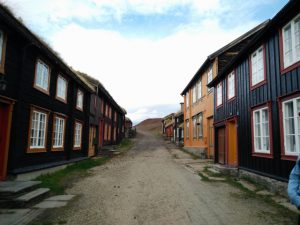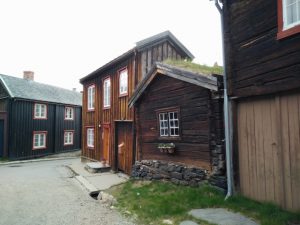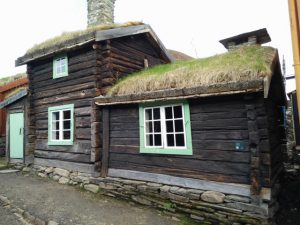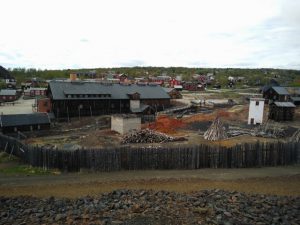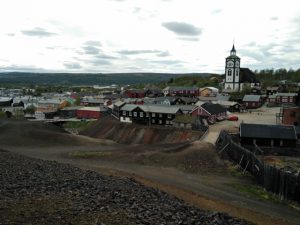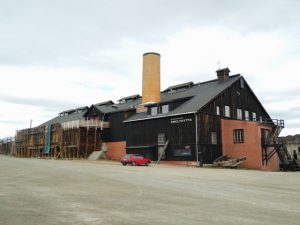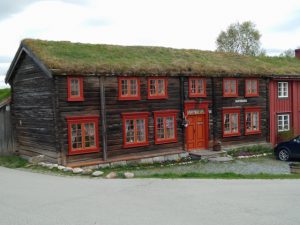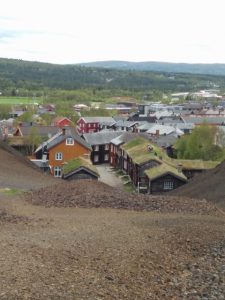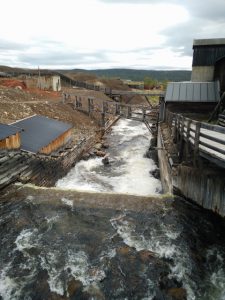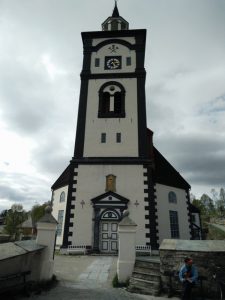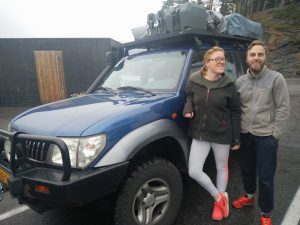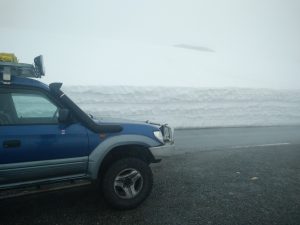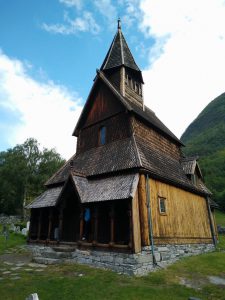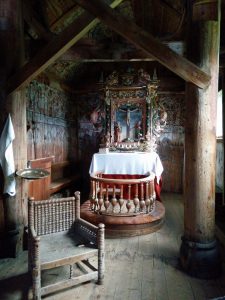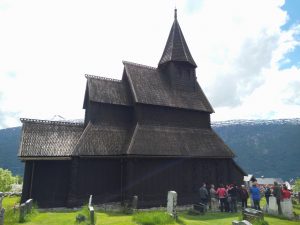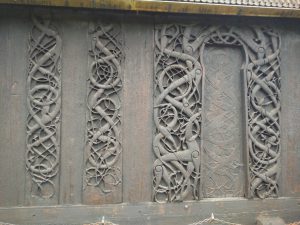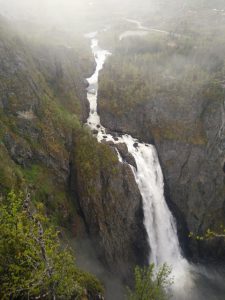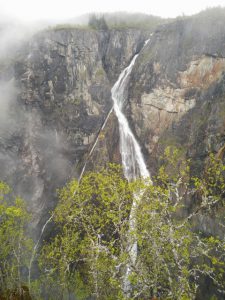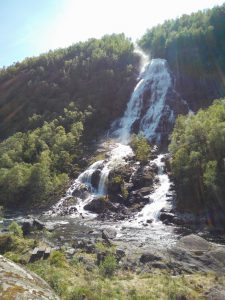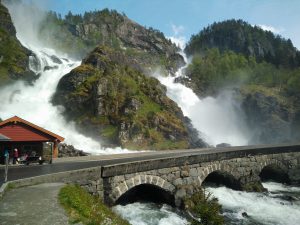I made it, one day before the longest day, to the North Cape. Not that he longest day will be noticeable in any way, the sky is full of grey clouds, wet snow is falling, a strong wind is gusting and it’s freezing cold. Why did I decide to go here anyways?
I arrived at the Arctic Circle!
The ancient mining town of Røros
“Røros Mining Town and the Circumference is linked to the copper mines, established in the 17th century and exploited for 333 years until 1977. The site comprises the Town and its industrial-rural cultural landscapes; Femundshytta, a smelter with its associated area; and the Winter Transport Route. Completely rebuilt after its destruction by Swedish troops in 1679, Røros contains about 2000 wooden one- and two-storey houses and a smelting house. Many of these buildings have preserved their blackened wooden façades, giving the town a medieval appearance. Surrounded by a buffer zone, coincident with the area of privileges (the Circumference) granted to the mining enterprise by the Danish-Norwegian Crown (1646), the property illustrates the establishment and flourishing of a lasting culture based on copper mining in a remote region with a harsh climate.”
Highest waterfall of Europe, you really don’t impress me much
A cold night and an ancient religious site
Considering the tunnel digging skills of the Norwegians one might not be surprised that the longest tunnel of the world, almost 25 KM, is in Norway. And yesterday I could have driven trough, however I didn’t. Instead I drove over the Lærdal tunnel, trough cold white landscape and even camped in the snow.
On the way up the mountain I met a relative of Brutus, an equal metallic blue Land Cruiser 95 “Prado” also dressed up for adventure. The further up the mountain I came the thicker the pack of snow was getting and I was driving trough walls of snow eventually.
My camp fore the night was at Flotvatnet, a still frozen lake and waterfall. Yes, it was cold, but the scenery was definitely worth it.

Just a bit after my camping spot an art installation was constructed by the name of Vedahaugane. Inside a bear’s den a bear was having a winter sleep on a pile of rubbish from ancient to modern times. The message was clear.
In the afternoon I visited the UNESCO World Heritage site Urnes Stave Church. The wooden church of Urnes, the stavkirke, was built in the 12th and 13th centuries and is an example of traditional Scandinavian wooden architecture from that era where traces of Celtic art and Viking traditions are brought together.
At the end of the evening I arrived at one of the foothills of the Jostedalsbreen glacier. Here the glacier ended and every now and then pieces of it broke off and felt down in the valley, an impressive sight. Eventually this ice melted and went up in a stream. A peaceful and quiet setting where I decided to make camp for tonight.


Bergen
This night I was invited by Alf from CouchSurfing to spend the night on his couch and to join him to the Nattjazz festival, but I first explored the city of Bergen by myself on the bicycle.
I parked the car close to Alf’s home and from there cycled to the city centre which was about 10 KM downhill. At the tourist information I picked up a cycling route which al in al took a couple of hours and gave a good sight of the city.
The remote farm of Kjeåsen
Today I made my way to Bergen, almost. But first more waterfalls and a remote farm.
After breakfast I left the parking at Kinsarvik and went to yet another waterfall, the Vøringfossen, again quite an impressive one. With a total drop of 182 meters it’s the 83rd highest waterfall in Norway.
Lots of waterfalls
The last two days were dominated by waterfalls, lots of waterfalls.
It started with a nameless waterfall, which already looked impressive, but it would only get better. Later followed Låtefossen, a twin waterfall consisting of two different streams coming together in a violent thunderous body of water.
Defeating Preikestolen was not so hard
So today I hiked the Preikestolen trail. It was said to be a challenging trail by the Stavanger tourist information, however except for some poor weather it was not to difficult in my opinion.
Preikestolen is a steep cliff which rises about 600 metres above the Lysefjorden. Atop the cliff, there is a flat top of 25 by 25 metres.
Stavanger and onwards to Preikestolen
After checking out the cannons of Kristiansand I moved on to Stavanger. The first part of the drive went over the highway, but later I switched over to the North Sea Road. This coastal route crosses small villages, fjords and fisheries. Quite some spectacular views and an impressive first impression of Norway.


